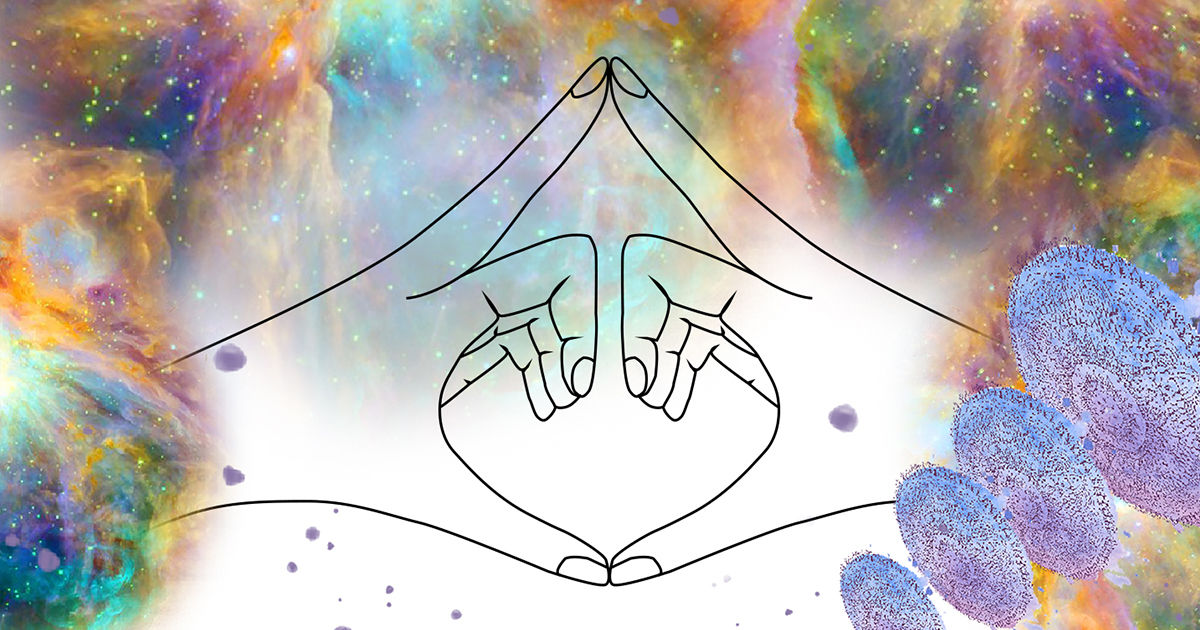A simple act like joining our hands in prayer can enable us to restore harmony in the universe. Why are our hands so important? We join our hands in prayer. We gesticulate with our hands. We express ourselves with our hands. We use our hands for eating and wiping our tears. We use our hands all the time. Our hands are centers of prana and the yogic mudras enable us to channelize the prana within ourselves. We use our hands for work and last but not least to express our love and tenderness for others and the earth.
Cherish your memories of contact with loving hands. Do you remember when your parents put their hand on your brow? Do you remember when you were embraced by your loved ones? Do you remember when you were stroked by your loved ones? Do you remember the feeling when you stroked a pet? Do you remember when you held a baby and the love you felt? I can go on with my list.
Whenever you use your hands, there is a sensation or an emotion. You have baked a cake, you used your hands, then you placed the cake on the table and cut slices. From the beginning to the end, it was an activity of joyfulness. Lighting the prayer lamp or candle, ringing the bell and lighting the incense, an act of devotion and then joining your hands in prayer. The peace which overcame you and holding the prayer book in your hands.
Unpleasant memories of raising your hands on someone, striking a child or an animal, or flinging something at someone can be erased by the prayer pose. The pranama asana enables one to attain a state of detachment and leads one to the path of working with detachment and being neutral.
Mudras
Mudras are expressions of the psyche. Mudra is a Sanskrit word derived from the root ‘mud’ which means to please or delight, and ‘dravay.” The causal form of ‘dru’, to draw forth. It is described so because its pose is said to give pleasure and satisfaction to the deity and this rebounds on the sadhak (practitioner). Mudra is a gesture which came spontaneously to the adepts and liberated persons (jivanmukta). I will explain the mudra associated with the hands.
Mudras associated with the hands are described as hasta mudras. Pranam Mudra is the most popular and simple mudra. It is performed by joining our hands together and having the palms and the five fingers touching each other. Hands are organs of action, and the motor nerves (which end in the motor cortex) control their movement.
Our hands are also sensory organs. On the palm and finger tips, tactile sensibilities are provided by different nerves whose impulses are transmitted to the sensory cortex and also to the adjacent association areas and then we experience different sensations. The hands are energy circuits. The right hand controls the left hemisphere and the left hand controls the right hemisphere. By joining our hands, we create balance and harmony within ourselves.
“The hand is the visible part of the brain”. – Immanuel Kant.
“Upon the palms of my hands I have written your name.” – Isaiah 19.16.
“Man plucks flowers with one hand and offers them with the other, but the flowers perfume both hands alike”. – Guru Har Raj Ji.
Aim Hrim Klim

